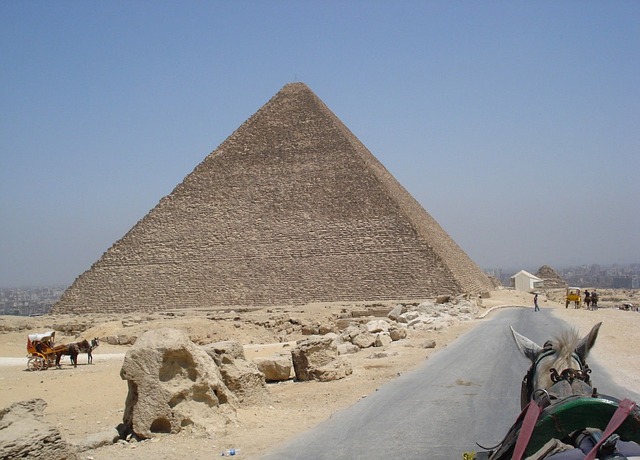Researchers from Cairo University, Laval University, and Nagoya University, will be using non-invasive imaging scans of four of Egypt’s Pyramids to find out what exists beyond their walls, without disturbing the pyramids through digging or drilling.
Medhi Tayoubi, one of the participants in the study, said that “The idea is to find the solution to the mystery of the pyramids”. He notes that a similar attempt was made three decades ago, but this is the first time a global project has attempted to use cutting-edge tech to get an idea of what’s actually inside the pyramids.
The Associated Press quoted Laval University’s Matthieu Klein as saying that his team plans on employing infrared technology to scan several meters beyond the walls; a technique that can be used without even touching the structures. “There could be interesting things there,” he said, “even a few meters deep, two or three blocks deep.”
Newser reports that the infrared scans are just the tip of the iceberg in what’s planned for the study. The researchers will also be using drones to subject the pyramids to 3D laser scans and cosmic-ray detectors. Why cosmic-ray detectors? The scientists are interested in how cosmic rays — the ones that continuously bombard our planet — affect the triangular desert structures.
The Egyptian pyramids are estimated to be about 4,600 years old, and the research team will be studying four of them.
The first to partake in the study will be the Bent Pyramid in Dashour, which was selected to go first because of its “distinguished and unique architectural design and because it is the first attempt at pyramid construction that has not been carefully studied”, according to Egypt’s antiquities minister Mamdouh Eldamaty.
The study will continue at the nearby Red Pyramid, and then proceed to the Giza plateau afterward to investigate both Chephren and Cheops.
Researchers hope the information they can gather from the imagery will allow them to map the interior pyramids. If it proves successful, it may be useful in the quest to locate the tomb used for the famous Egyptian pharaoh Tutankhamun’s burial chamber (King Tut) — which may also be the resting place of the beautiful Queen Nefertiti.
























